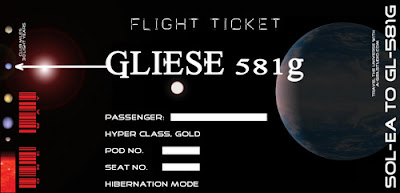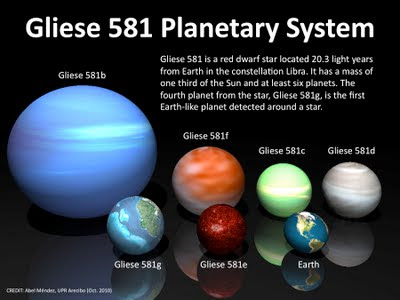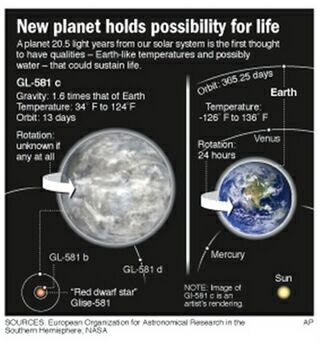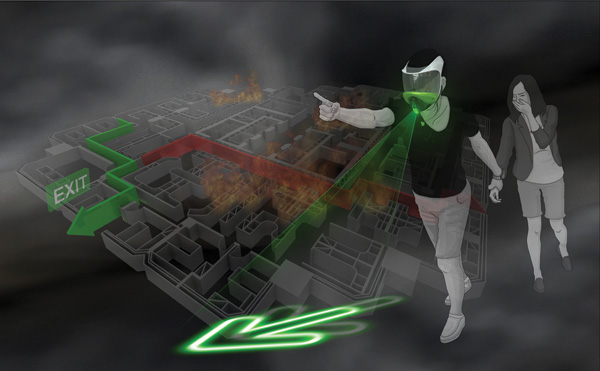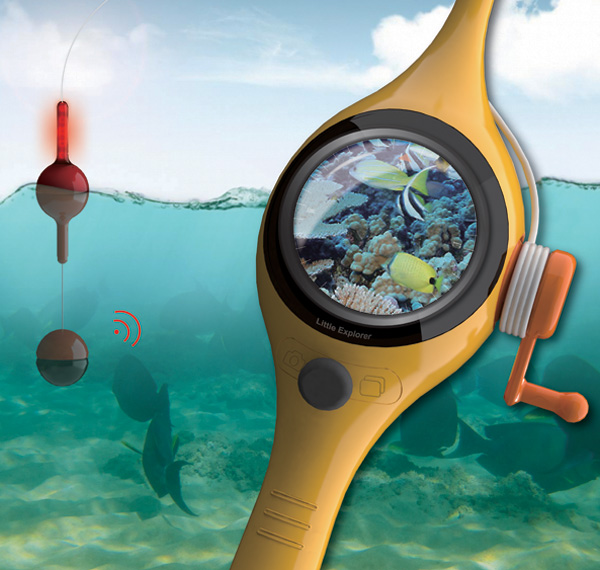A well-known extrasolar planet nicknamed Osiris has surprised astronomers again.
This artist's illustration shows a dramatic close-up of the scorched extrasolar planet HD 209458b in its orbit only 4 million miles from its yellow, Sun-like star. The planet is a type of extrasolar planet known as a "hot Jupiter."
Credit: ESA, Alfred Vidal-Madjar (Institut d'Astrophysique de Paris, CNRS, France) and NASA Scientists have detected oxygen and carbon in its atmosphere, the first time these elements have been observed in a planet beyond our Solar System. The oxygen and carbon found in its atmosphere are evaporating at such an immense rate that the existence of a new class of extrasolar planets - 'the chthonian planets' or 'dead' cores of completely evaporated gas giants - has been proposed. Using the NASA/ESA Hubble Space Telescope, scientists have observed the planet (officially known as HD 209458b) passing in front of its parent star, and found oxygen and carbon surrounding the planet in an extended ellipsoidal envelope - the shape of a rugby-ball. These atoms are swept up from the lower atmosphere with the flow of the escaping atmospheric atomic hydrogen, like dust in a supersonic whirlwind.
The team led by Alfred Vidal-Madjar (Institut d'Astrophysique de Paris, CNRS, France) reports this discovery in a forthcoming issue of Astrophysical Journal Letters. The team observed four transits of the planet in front of the star with Hubble in October and November 2003. The observations of structure and chemical make-up of the atmosphere were made in ultraviolet light, using Hubble's spectrograph STIS. Hubble's position above the atmosphere makes it the only telescope that can currently perform these types of ultraviolet studies.
The planet HD 209458b may sound familiar. It is already an extrasolar planet with an astounding list of firsts: the first extrasolar planet discovered transiting its sun, the first with an atmosphere, the first observed to have an evaporating hydrogen atmosphere (in 2003 by the same team of scientists) and now the first to have an atmosphere containing oxygen and carbon. Furthermore the 'blow-off' effect observed by the team during their October and November 2003 observations with Hubble had never been seen before.
In honor of such a distinguished catalog this extraordinary extrasolar planet has provisionally been dubbed "Osiris". Osiris is the Egyptian god who lost part of his body - like HD 209458b - after his brother killed and cut him into pieces to prevent his return to life.
Oxygen is one of the possible indicators of life that is often looked for in experiments searching for extraterrestrial life (such as those onboard the Viking probes and the Spirit and Opportunity rovers), but according to Vidal-Madjar: "Naturally this sounds exciting - the possibility of life on Osiris - but it is not a big surprise as oxygen is also present in the giant planets of our Solar System, like Jupiter and Saturn." What, on the other hand was surprising was to find the carbon and oxygen atoms surrounding the planet in an extended envelope. Although carbon and oxygen have been observed on Jupiter and Saturn, it is always in combined form as methane and water deep in the atmosphere. In HD 209458b the chemicals are broken down into the basic elements. But on Jupiter or Saturn, even as elements, they would still remain invisible low in the atmosphere. The fact that they are visible in the upper atmosphere of HD 209458b confirms that atmospheric 'blow off' is occurring.
The scorched Osiris orbits 'only' 7 million kilometers from its yellow Sun-like star and its surface is heated to about 1,000 degrees Celsius.
Whereas hydrogen is a very light element - the lightest in fact - oxygen and carbon are much heavier in comparison. This has enabled scientists to conclude that this phenomenon is more efficient than simple evaporation. The gas is essentially ripped away at a speed of more than 35,000 km/hour. "We speculate that even heavier elements such as iron are blown off at this stage as well" says team member Alain Lecavelier des Etangs (Institut d'Astrophysique de Paris, CNRS, France).
The whole evaporation mechanism is so distinctive that there is reason to propose the existence of a new class of extrasolar planets - the chthonian planets, a reference to the Greek God Khtôn, used for Greek deities from the hot infernal underworld (also used in the French word autochton). The chthonian planets are thought to be the solid remnant cores of 'evaporated gas giants', orbiting even closer to their parent star than Osiris. The detection of these planets should soon be within reach of current telescopes both on the ground and in space.
The discovery of the fierce evaporation process is, according to the scientists, "highly unusual", but may indirectly confirm theories of our own Earth's childhood. "This is a unique case in which such a hydrodynamic escape is directly observed. It has been speculated that Venus, Earth and Mars may have lost their entire original atmospheres during the early part of their lives. Their present atmospheres have their origins in asteroid and cometary impacts and outgassing from the planet interiors", says Vidal-Madjar.
What's Next
NASA's planned Kepler mission will monitor thousands of stars over a four-year period, searching for transiting planets. Kepler will be sensitive enough to detect Earth-sized worlds, if any exist, around several hundred nearby stars. These studies will then lead to the ambitious Terrestrial Planet Finder mission (2012-2015), which will examine extrasolar planets for signs of life.
In December 2001, NASA selected the Kepler Mission, a project based at NASA Ames, as one of the next NASA Discovery missions. The Kepler Mission, scheduled for launch in 2006, will use a spaceborne telescope to search for Earth-like planets around stars beyond our solar system. A key criterion for such suitable planets would be whether they reside in habitable zones, or regions sometimes protected by gas giants but with temperate climates and liquid water.
SIM, scheduled for launch in 2009, will determine the positions and distances of stars several hundred times more accurately than any previous program.
Credit: NASA / JPL One NASA estimate says Kepler should discover 50 terrestrial planets if most of those found are about Earth's size, 185 planets if most are 30 percent larger than Earth, and 640 if most are 2.2 times Earth's size. In addition, Kepler is expected to find almost 900 giant planets close to their stars and about 30 giants orbiting at Jupiter-like distances from their parent stars. After Kepler, NASA is considering a 2009 launch for the Space Interferometry Mission (SIM). SIM's primary mission will be to measure distances to stars with 100 times greater precision than currently is possible. This will improve estimates of the size of the universe, and help determine the true brightness of stars, allowing us to learn more about their chemical compositions and evolutions. SIM also will look for Earth-sized planets in the habitable zones around some 200 stars.
SIM will be an interferometer, which means it will combine interacting light waves from three telescopes. This interaction, called interference, makes the individual telescopes act as though they were a single, larger telescope with greater light-gathering ability.
http://www.nasa.gov/vision/universe/newworlds/Osiris_leaks.html











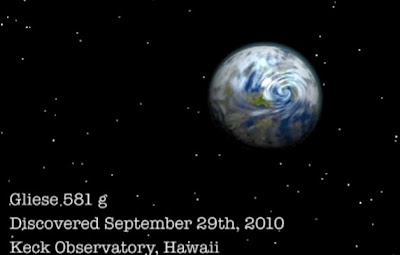 The horrendous news that comes in September 2010. An Earth-like planets are thought to really - really exist in space. This is not just an illusion or a dream of all people in the world. Almost all of them identical alias similar to the condition of the earth, even to its size!. The Earth-like planet is named Gliese 581g
The horrendous news that comes in September 2010. An Earth-like planets are thought to really - really exist in space. This is not just an illusion or a dream of all people in the world. Almost all of them identical alias similar to the condition of the earth, even to its size!. The Earth-like planet is named Gliese 581g
